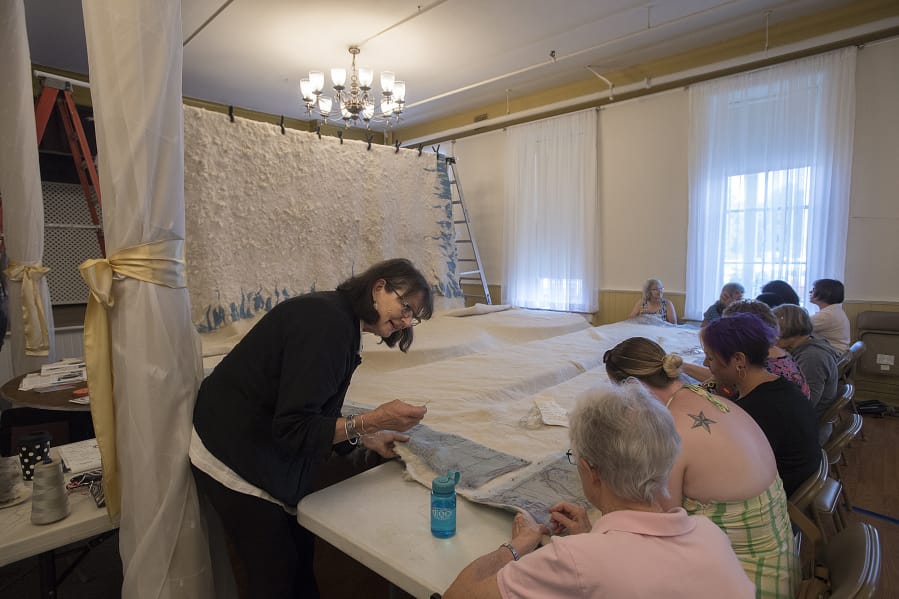When Janice Arnold was a little child, she and her whole family used to spend their weekends surveying Clark County: Driving around and measuring roads for father Phil Arnold, who worked with his kids’ calculations, a slide rule and India ink to make maps that are still treasured around here.
“We didn’t have toys, we had tools,” Janice Arnold said. “I’ve always been a maker. I learned to make and sew.”
But Arnold never thought of herself as an artist, she said. She took high school art and studied “textile traditions” from around the world, she said — but didn’t really feel any magic until she was commissioned by Nordstrom to make felt sculptures for store windows. Her feltmaking textbook for that project was a National Geographic magazine about Mongolians who compressed wool into felt by rolling huge, heavy swaths of it behind horses; eventually she visited Nepal and Kyrgyzstan and Mongolia, learning directly from felt makers who’ve been practicing their art in the same way for 6,000 years, she said.
“The fiber turned to fabric in my hands,” she said. “That was my ‘aha!’ moment.”




